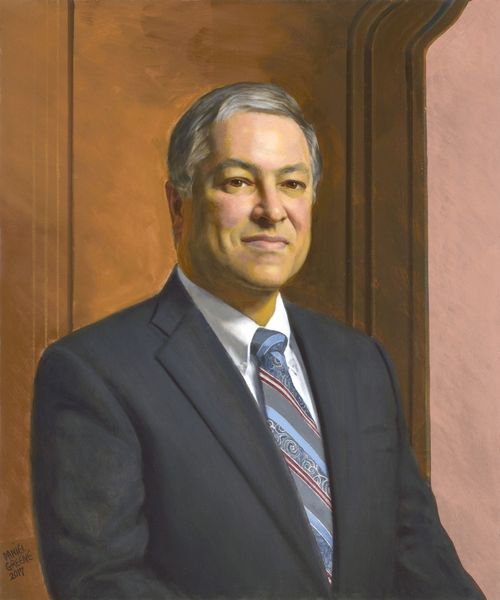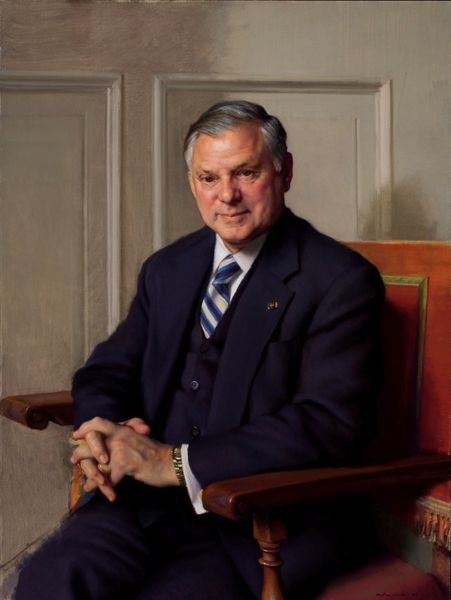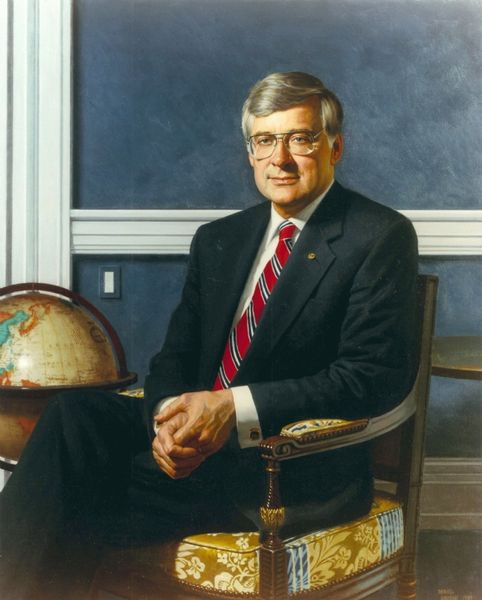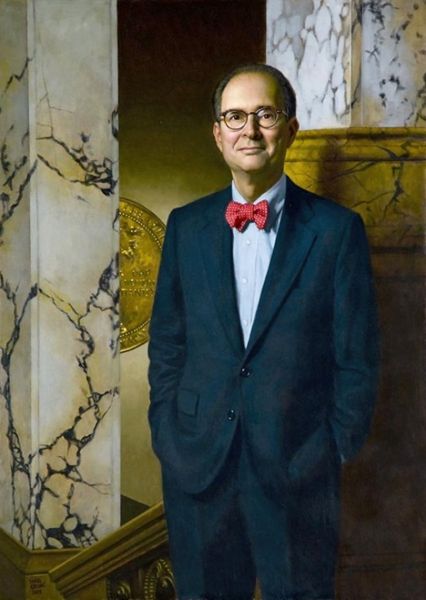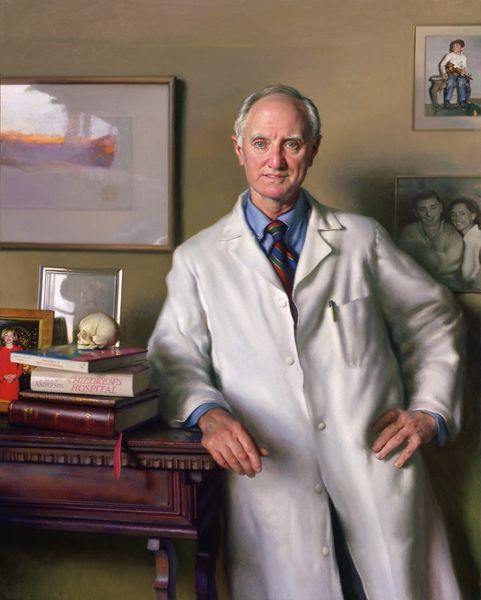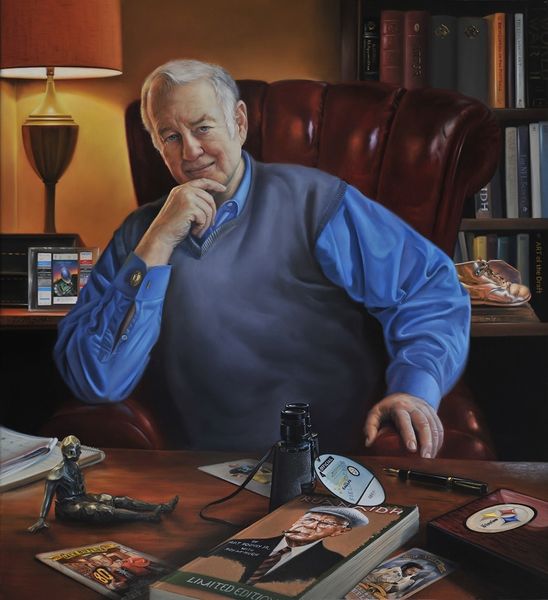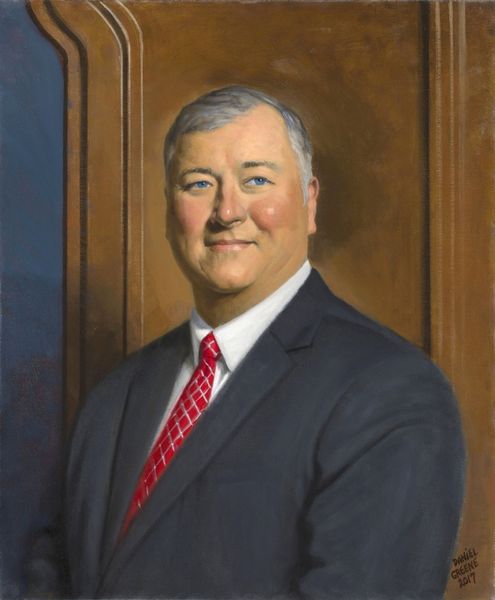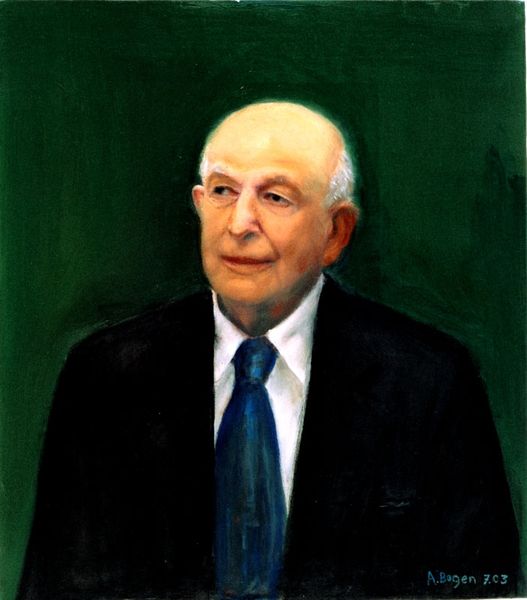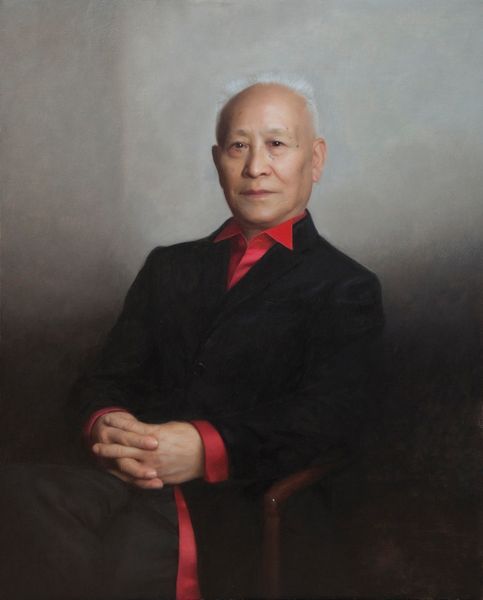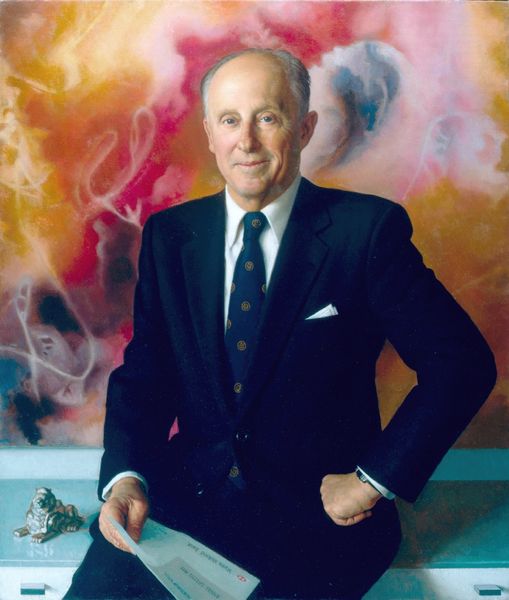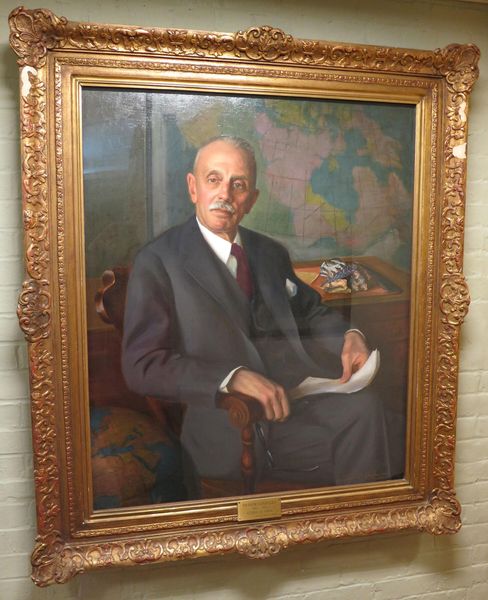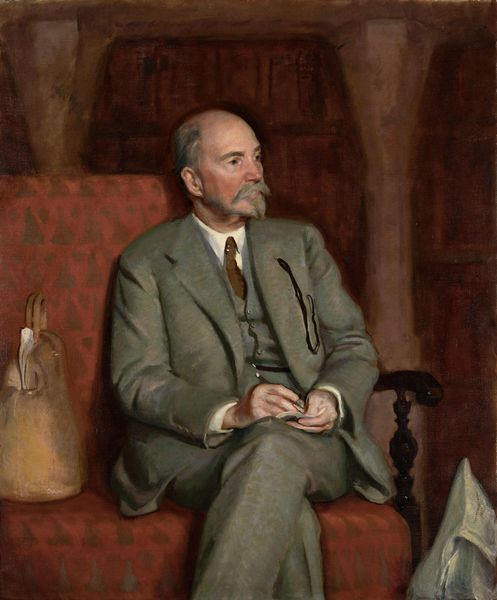
oil-paint
#
portrait
#
figurative
#
portrait
#
oil-paint
#
academic-art
#
portrait photography
#
realism
Copyright: Modern Artists: Artvee
Curator: This is Nelson Shanks' portrait of Ed Notebaert, the CEO of the Children's Hospital of Philadelphia, painted in 1998. It presents a fascinating depiction of power and philanthropy at the close of the twentieth century. Editor: It’s striking how traditional the portrait is, while simultaneously giving off a kind of casual energy. There's an odd juxtaposition happening, particularly with those almost clashing symbols in the background, behind the subject, like this is a glimpse into the sitter’s layered personality. Curator: Absolutely. Shank’s skill in realism allowed him to both flatter and subtly challenge perceptions. Placing Notebaert in what looks like a comfortable setting, with personal items, hints at a deeper narrative beyond the CEO persona. What does that narrative mean in relation to an organization like a children’s hospital, what social statements are made through their representation? Editor: Well, look at how the lines of the red tie draw your eyes straight up to his face, it centers the whole composition and brings this vibrant spark to it, balancing the darker tones of the suit. The red is mirrored by the handkerchief and subtly hinted at with the decoration on that toy motorcycle on the left. There’s a dialogue set up with color. Curator: And what a fascinating array of objects for self-representation. We have a statuette depicting maternity, the miniature motorcycle you noted, and some form of representational drawing on the wall, the presence of all these objects point to the various facets that make up this figure's identity and institutional roles. Consider that the piece's official display contributes to how such institutions want to project authority figures within their system. Editor: But it does humanize him, though. Look at the subtle aging in his face, captured through meticulous brushwork. And his seated pose lends him a relaxed feeling—it’s very intimate for a CEO's portrait, with his slightly unfocused gaze giving him this kind of dream-like aura. This is all anchored, compositionally by his arm which follows through and terminates in the placement of his hands. Curator: True, and Nelson Shanks, throughout his career, often used portraits to capture more than likeness—he captured eras and contexts. He worked at the intersection of the powerful, capturing their aura of privilege while simultaneously challenging societal notions of such portraiture. It really pushes you to reflect on the complex relationship between personal identity, public role, and institutional power at the end of the millennium. Editor: Right, the color, object composition and facial expression definitely complicates reading this painting and add nuance to the symbolism here. The reading evolves the more you look.
Comments
No comments
Be the first to comment and join the conversation on the ultimate creative platform.
